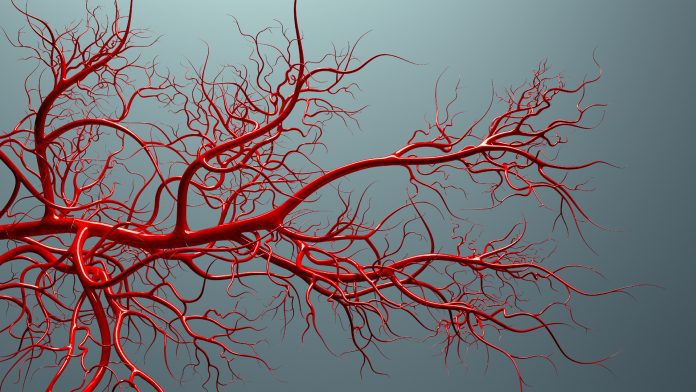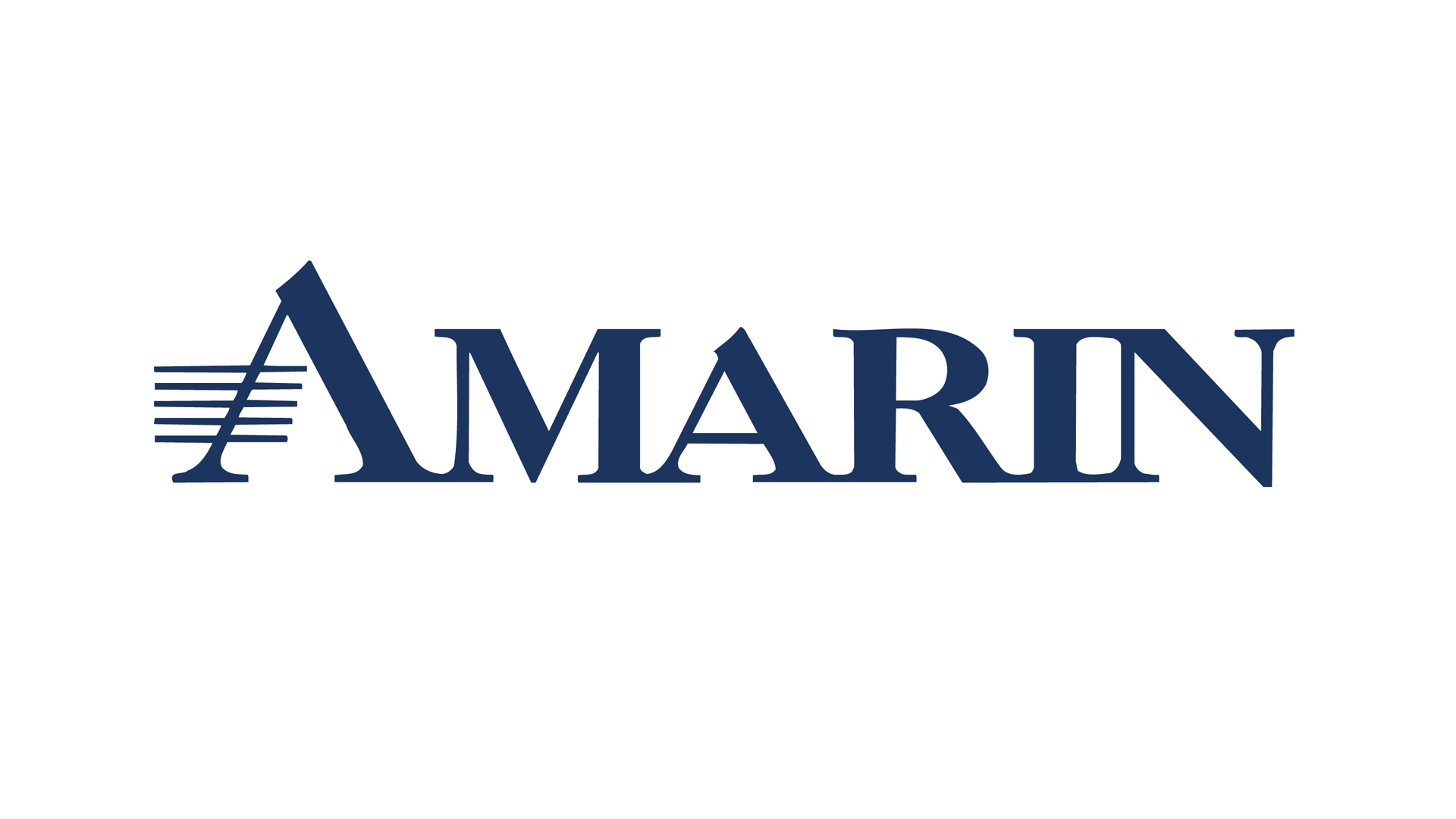
World-leading pioneers of the pharmaceutical industry, Amarin Corporation, comprehensively explore the ever-evolving landscape of cardiovascular disease, analysing the current challenges facing mitigating the impacts of the condition.
Cardiovascular disease (CVD) is a rapidly growing health crisis in Europe, accounting for 3.9 million deaths each year.1 Unless urgent action is taken, the World Health Organization will not achieve its goals of reducing the burden of heart disease by 2025.2 Therefore, a significantly increased focus on CVD prevention, management and treatment is urgently needed if strides are to be made in meeting this foremost challenge.
Through its clinical development programme, Amarin Corporation is determined to make a significant difference in progressing and optimising CVD care. Amarin’s research and expertise stand at the forefront of cardiovascular disease. As a rapidly growing, innovative pharmaceutical company, Amarin is dedicated to changing the treatment paradigm in cardiovascular disease, developing therapies to improve cardiovascular health and reduce cardiovascular risk effectively. The company is committed to improving the lives of high-risk cardiovascular patients across Europe through the advancement of scientific understanding of the impact of residual risk that exists beyond traditional therapies.
Founded in the UK in 1989 and with offices in Ireland (global headquarters are in Dublin), Switzerland (Zug) and the United States (New Jersey), Amarin has employees, commercial partners, and suppliers across the world. Having achieved a strong presence in the United States, Amarin is now embarking on creating a new company infrastructure in Europe. Through its Zug-based operation, Amarin is building a local company presence in all major European markets.
CVD: a burden that continues to escalate
Amarin’s drive to establish a systematic change in CVD management is against the backdrop of a major challenge as the problem of cardiovascular disease grows ever more serious. The cost of CVD burden stands at €210bn a year in the European Union (EU) alone,1 with both the health and economic burden of CVD set to grow exponentially in Europe and across the globe in the coming years.2,3
Ischaemic heart disease, one of the main forms of CVD, is the single leading cause of death in both men and women in Europe.1 Although premature death from CVD (below 70 years) in high-income countries has fallen by 9% in women and 11% in men since 2010; it is a different story in middle-income countries, where rates have declined by only 8% in women and 2% in men.2 The prevalence of Type 2 diabetes, a major risk factor for cardiovascular disease, in Europe has also increased rapidly over the last ten years1 and Type 2 diabetes now affects an estimated 60 million people in Europe.2
There is no denying that considerable progress has been made during the last few decades in the prevention and management of CVD. The large case-control INTERHEART study, conducted in 52 countries in 2004, assessed the importance of risk factors for CVD and identified nine key easily measured risk factors (smoking, lipids, hypertension, Type 2 diabetes, obesity, diet, physical activity, alcohol consumption, and psychosocial factors) that account for over 90% of the risk of acute myocardial infarction (heart attack).4 At the same time, advances in diagnostics and treatments – including blood pressure lowering and low-density lipoprotein cholesterol (LDL-C) lowering agents – have been key in playing a role to reduce numbers of premature deaths.
The global COVID-19 pandemic has further highlighted the urgency of meeting the CVD challenge. It is now well established that the impact of COVID-19 goes well beyond respiratory effects.5 Indeed, anyone with a heart condition is considered at increased risk of more severe complications of COVID-19 and at particularly high risk if over 60 years of age.5
A recent meta-analysis concluded that cardiovascular disease and its risk factors – hypertension and Type 2 diabetes – are significantly associated with fatal outcomes in patients with COVID-19 across all ages.6 Although younger patients had a lower prevalence of CVD and its risk factors than elderly patients, the relative risk of fatal outcomes in COVID-19 patients under age 50 with hypertension, Type 2 diabetes and cardiovascular disease was actually higher than in elderly patients.6
Using national mortality data, a recent analysis conducted during 2020 concluded an estimated 31,000 to 62,000 excess deaths in people with CVD caused directly by COVID-19 infections in England. Additionally, the study suggests that a further 50,000 to 100,000 indirect deaths may have been caused due to strains on the healthcare system and changes in patient behaviour, with greater reluctance to seek medical care 7.
Statin therapy: success and limitations
Statin therapies have long been the cornerstone treatment for cardiovascular disease – they are the class of drug of choice in primary and secondary prevention.8 LDL-C is strongly associated with CVD risk, which increases linearly as blood concentrations rise.9 Numerous primary and secondary prevention trials have shown that statin therapy reduces the risk of cardiovascular events by 25 to 35%.8 Statin therapy has been shown to reduce vascular risk each year that it continues to be taken, allowing for larger benefits to accrue over prolonged use.10 Large scale evidence from randomised trials shows that statin therapy cuts the risk of major vascular events – including myocardial infarctions (heart attacks) and strokes – by approximately one quarter for each mmol/L reduction in LDL-C during each year (after the first) that it continues to be taken.11
Yet LDL-C reduction is not the full story; despite achieving target LDL-C levels (defined as <70mg/dl), some patients are still at significant CVD risk.8 Guidelines suggest that LDL-C is the primary lipid treatment target to reduce atherosclerotic CVD risk.12 However, there is extensive interindividual variation in the extent of reduction of atherogenic (fatty deposit forming) lipoprotein levels associated with statin therapy.13 Clearly, for some groups of patients, there is a need to look beyond LDL-C targeted therapy.
The role of elevated triglycerides – another type of lipid found in the blood – is being increasingly recognised as a risk factor of cardiovascular disease14. Epidemiological studies have shown that elevated fasting triglyceride levels are associated with cardiovascular events.15 Data from the Copenhagen General Population Study showed that a single elevated non-fasting triglyceride measurement was associated with increased risk for myocardial infarction, ischemic heart disease and death.16
This finding is supported by other studies showing that both elevated baseline triglyceride levels and low levels of high-density lipoprotein cholesterol (HDL-C) are risk factors associated with cardiovascular disease.17,18 Epidemiological and Mendelian randomisation studies (which use genetic alterations to differentiate correlation from causation in observational data) have pointed towards a role for elevated triglycerides in atherosclerosis, resulting from remnant cholesterol (the cholesterol contained in triglyceride-rich lipoprotein) particles.19
The 22-year follow-up data from a study evaluating a treatment for dyslipidemia, which included over 15,000 patients, revealed that in patients with established CVD, higher triglyceride levels were independently associated with increased 22-year mortality; the higher the triglycerides concentration, the higher the independent mortality risk. Interestingly, however, this increased risk for death was detected in patients with triglycerides of 100 to 149 mg/dL, compared to patients with lower triglyceride levels.20
Refocus efforts beyond LDL-C
The European Society of Cardiology has branded that cardiovascular disease ‘may be the biggest epidemic in human history. It has affected the greatest numbers, it has had the greatest cost, and it is not over yet’.2
Current management, with a primary focus on LDL-C, does not optimise risk prevention for large numbers of patients. Therefore, there is a need to look beyond LDL-C and consider the importance of other risk markers, like serum triglycerides, in all at-risk patients. In association with an increasing prevalence of obesity and Type 2 diabetes in recent decades, the number of patients with elevated triglycerides has increased 21 and will continue to rise in parallel.
Guidelines are now starting to acknowledge the growing evidence and role of triglycerides in cardiovascular disease management: the 2019 European Society of Cardiology/European Atherosclerosis Society guidelines recommend the measurement of triglycerides as part of the routine full lipid analysis approach.22 As CVD management broadens, focusing beyond LDL-C treatment will become an increasingly important measure in the ambitious goal of reducing the vast global burden of this disease.
This is paid for article written by Amarin. Date of Preparation: December 2021. Job Number UK-NP-00059.
References
- European Heart Network. European Cardiovascular Disease Statistics 2017. https://ehnheart.org/cvd-statistics/cvd-statistics-2017.html Accessed October 2021.
- ESC Cardiovascular Realities 2020. https://www.flipsnack.com/Escardio/esc-cardiovascular-realities-2020/full-view.html. Accessed October 2021.
- Roth GA, Mensah GA, Johnson CO et al. Global Burden of Cardiovascular Diseases and Risk Factors, 1990-2019: Update from the GBD 2019 Study. J Am Coll Cardiol. 2020;76(25):2982-3021.
- Yusuf S, Hawkin S, Ounpuu S et al. Effect of Potential Risk Factors Associated with Myocardial Infraction in 52 Countries (the INTERHEART Study) Case-Control Study. Lancet. 2004; 364 (9438): 937-952.
- Bueno, H. COVID-19 and cardiovascular disease: a lethal syndemic. e-Journal of Cardiology Practice – Vol. 21, N° 9 – 17 Nov 2021 https://www.escardio.org/Journals/E-Journal-of-Cardiology-Practice/Volume-21/covid-19-and-cardiovascular-disease-a-lethal-syndemic Accessed December 2021.
- Bae S, Kim SR, Kim M, et al. Impact of Cardiovascular Disease and Risk Factors on Fatal Outcomes in Patients With COVID-19 According to Age: A Systematic Review and Meta-Analysis. Heart. 2021; 107: 373-380.
- Banerjee A, Chen S, Pasea L, et al. Excess Deaths of People With Cardiovascular Diseases During the COVID-19 Pandemic. Eur J Prev Cardiol. 2021; zwaa155.
- Ganda OP, Bhatt DL, Mason, RP, et al. Unmet Need for Adjunctive Dyslipidemia Therapy in Hypertriglyceridemia Management. J Am Coll Cardiol. 2018;72(3):330-343.
- Timmis A, Townsend N, Gale C, et al. European Society of Cardiology: Cardiovascular Disease Statistics 2019. Eur Heart J. 2020; 41: 12-85.
- Lim GB. Dyslipidaemia: Balancing the Benefits and Risks of Statin Therapy. Nat Rev Cardiol. 2016 Nov;13(11):632-633.
- Collins R, Reith C, Emberson J, et al. Interpretation of the Evidence for the Efficacy and Safety of Statin Therapy. Lancet. 2016; 388(10059):2532-2561.
- European Heart Journal 2021 ESC Guidelines on Cardiovascular Disease Prevention in Clinical Practice. https://academic.oup.com/eurheartj/article/42/34/3227/6358713# Accessed October 2021.
- Boekholdt SM, Hovingh GK, Mora S, et al. Very Low Levels of Atherogenic Lipoproteins and the Risk for Cardiovascular Events: A Meta-Analysis of Statin Trials. J Am Coll Cardiol. 2014; 64(5):485-494.
- Aberra T, Peterson ED, Pagidipati NJ et al. The Association Between Triglycerides and Incident Cardiovascular Disease: What Is “Optimal”? J Clin Lipidol. 2020;14(4):438-447.e3.
- Mason RP, Libby P, Bhatt DL. Emerging Mechanisms of Cardiovascular Protection for the Omega-3 Fatty Acid Eicosapentaenoic Acid. Arterioscler Thromb Vasc Biol. 2020; 40(5):1135-1147.
- Nordestgaard BG, Benn M, Schnohr P et al. Nonfasting Triglycerides and Risk of Myocardial Infarction, Ischemic Heart Disease, and Death in Men and Women. JAMA. 2007;298(3):299-308.
- Lawler PR, Kotrri G, Koh M, et al. Real-World Risk of Cardiovascular Outcomes Associated with Hypertriglyceridaemia Among Individuals with Atherosclerotic Cardiovascular Disease and Potential Eligibility for Emerging Therapies, Eur Heart J. 2020 Jan 1;41(1):86-94.
- Toth PP, Granowitz C, Hull M, et al. High Triglycerides Are Associated with Increased Cardiovascular Events, Medical Costs, and Resource Use: A Real-World Administrative Claims Analysis of Statin-Treated Patients with High Residual Cardiovascular Risk. J Am Heart Assoc. 2018 Aug 7;7(15).
- Virani S, Morris PB, Agarwala A, et al. 2021 ACC Expert Consensus Decision Pathway on the Management of ASCVD Risk Reduction in Patients with Persistent Hypertriglyceridemia: A Report of the American College of Cardiology Solution Set Oversight Committee. J Am Coll Cardiol. 2021; 78(9):960-993.
- Klempfner R, Erez A, Sagit B-Z, et al. Elevated Triglyceride Level Is Independently Associated With Increased All-Cause Mortality in Patients With Established Coronary Heart Disease: Twenty-Two-Year Follow-Up of the Bezafibrate Infarction Prevention Study and Registry. Circ Cardiovasc Qual Outcomes 2016;9(2):100-108.
- Ballantyne CM, Bays HE, Kastelein JJ et al. Efficacy and Safety of Eicosapentaenoic Acid Ethyl Ester (AMR101) Therapy in Statin-Treated Patients With Persistent High Triglycerides (from the ANCHOR study). Am J Cardiol. 2012;110(7):984-992.
- Mach F, Baigent C, Catapano AL et al. 2019 ESC/EAS Guidelines for the Management of Dyslipidaemias: Lipid Modification to Reduce Cardiovascular Risk. Eur Heart J. 2020; 41(1):131.

























